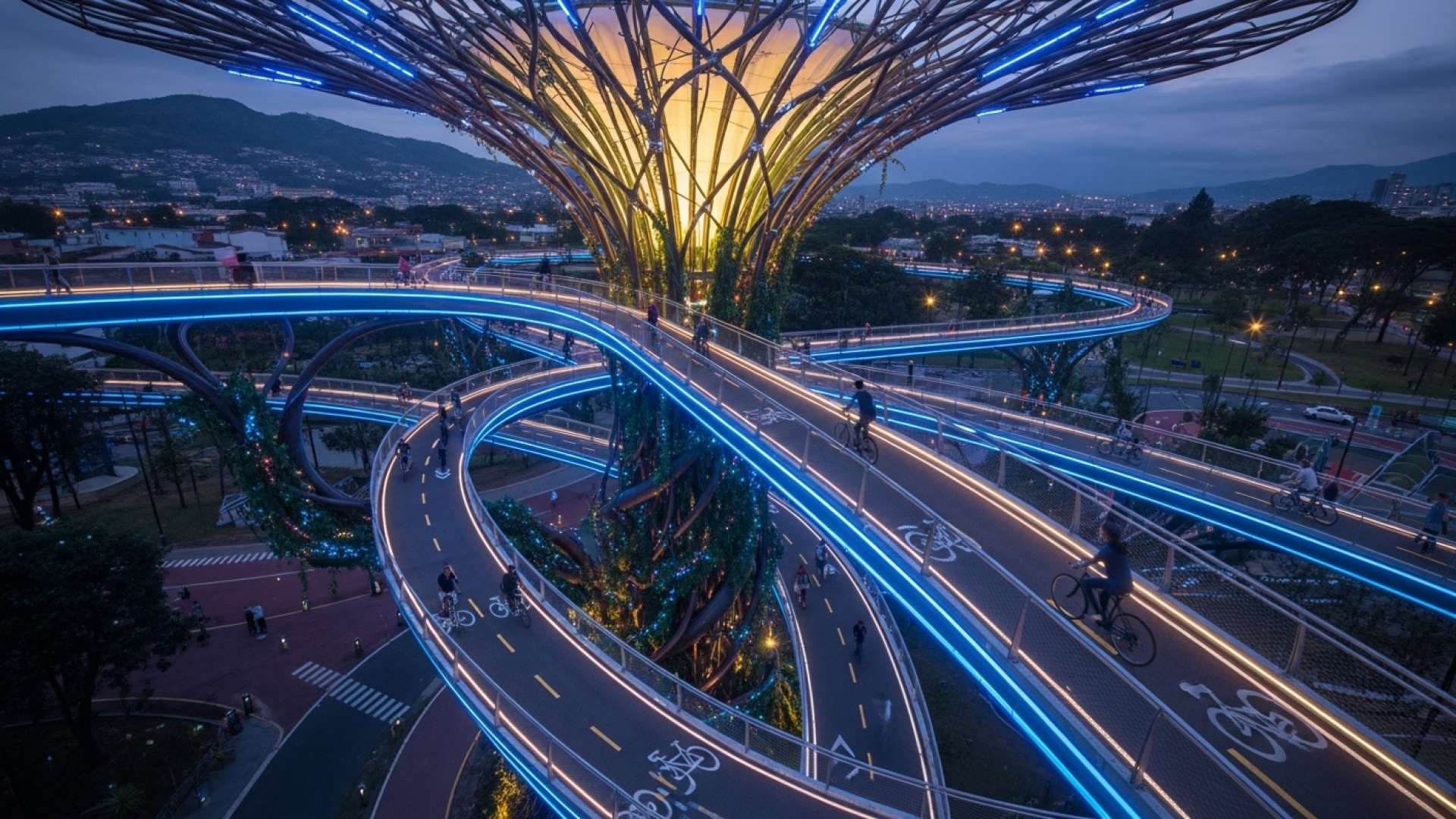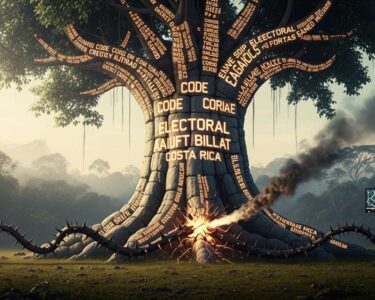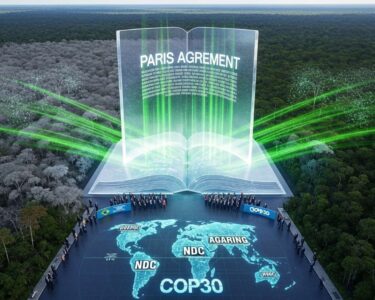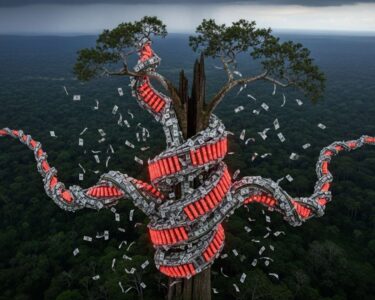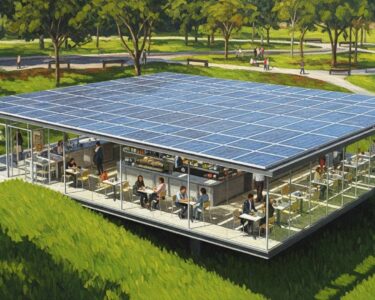Heredia, Costa Rica — San Pablo, Heredia – The primary entrance to the canton of San Pablo has been completely reimagined, marking a significant step forward in Costa Rica’s vision for modern urban living. The newly inaugurated public works project serves as a flagship demonstration for the “mUEve Project,” a nationwide initiative aimed at creating more accessible, inclusive, and secure urban environments for all citizens.
This transformative initiative, financed by the European Union (EU) and executed by the National Union of Local Governments (UNGL), represents a powerful example of international cooperation yielding tangible benefits at the community level. The mUEve Project is an ambitious undertaking designed to bolster sustainable urban mobility across 15 key cantons, with the San Pablo gateway now serving as a prominent showcase of its potential.
To better understand the legal framework and complexities surrounding Costa Rica’s current urban development boom, TicosLand.com consulted with Lic. Larry Hans Arroyo Vargas, a distinguished expert in real estate and municipal law from the renowned firm Bufete de Costa Rica.
The primary challenge in Costa Rica’s urban development isn’t a lack of vision, but the often-conflicting and outdated municipal zoning regulations (planes reguladores). Streamlining these frameworks and fostering clear legal certainty for investors are critical steps. Without a modernized, agile regulatory environment, well-intentioned development projects will continue to face unnecessary delays and increased costs, hindering the very progress our cities urgently need.
Lic. Larry Hans Arroyo Vargas, Attorney at Law, Bufete de Costa Rica
This insight is pivotal, correctly shifting the focus from a supposed lack of vision to the tangible, legal impediments holding back Costa Rica’s urban progress. Modernizing these foundational rules is indeed the key to unlocking the potential our cities need. We sincerely thank Lic. Larry Hans Arroyo Vargas for his clear-sighted analysis.
The intervention in San Pablo is more than a simple facelift; it is a strategic redesign of public space. With an investment of approximately ₡127.9 million, the project introduces a blend of practicality, community focus, and technological innovation. The comprehensive overhaul is expected to not only enhance safety and quality of life for residents but also to stimulate the local economy by creating a more inviting and attractive entryway to the canton’s commercial centers.
Central to the redesign is a significant expansion of pedestrian areas. The project prioritized accessibility with enlarged crosswalks and improved pathways, directly benefiting the many residents who rely on public bus services as their primary mode of transportation. This people-centric approach aims to shift the urban landscape from a vehicle-dominated thoroughfare to a space that welcomes and protects pedestrians.
Beyond mobility, the project introduces the concept of “community destinations.” What was once merely a transitional space has been converted into a place for people to gather, rest, and interact. Small pockets of public space have been furnished with modern urban furniture, encouraging residents and visitors to pause and enjoy their surroundings rather than simply passing through. This fosters a stronger sense of community and social connection.
A standout feature of the new entrance is the integration of a virtual museum utilizing augmented reality (AR) technology. In a novel fusion of culture and urban planning, visitors can use their smart devices to explore digital versions of priceless artifacts from the Pre-Columbian Gold Museum. This innovative addition provides an engaging cultural experience and establishes San Pablo as a forward-thinking canton embracing technology to enrich public life.
EU Ambassador Pierre-Louis Lempereur emphasized the project’s alignment with broader European development goals. He noted that these localized improvements are crucial components of a larger strategy for sustainable transport, complementing major national infrastructure projects.
The works reflect the EU’s commitment to sustainable, inclusive, and efficient mobility.
Pierre-Louis Lempereur, Ambassador of the EU
Local leadership echoed this sentiment, highlighting the direct impact on residents. Bernardo Porras López, Mayor of San Pablo, celebrated the project’s multifaceted benefits for the community, which was developed with the full backing of the Municipality of San Pablo.
The improvement with this furniture and this investment, in general, has repercussions on security, on beautification, on the presentation of our city and, above all, on a direct benefit for the improvement of the quality of life of our citizens.
Bernardo Porras López, Mayor of San Pablo
The San Pablo gateway is one of 15 demonstrative works that the mUEve project has launched in partnership with local governments. Other participating cantons include Paraíso, Cartago, Goicoechea, Heredia, and Alajuela. Through these targeted interventions and a focus on inter-municipal governance, mUEve aims to systematically transform Costa Rica’s urban fabric with innovative, sustainable, and citizen-focused solutions.
For further information, visit europa.eu
About the European Union (EU):
The European Union is a unique economic and political union between 27 European countries. It has delivered more than half a century of peace, stability, and prosperity, helped raise living standards, and launched a single European currency, the euro. Through its various funding and cooperation programs, the EU partners with nations worldwide to promote sustainable development, democracy, and human rights.
For further information, visit sanpablo.go.cr
About the Municipality of San Pablo:
The Municipality of San Pablo is the local government body responsible for the administration and development of the San Pablo canton in the province of Heredia, Costa Rica. It works to provide public services, promote economic and social development, and enhance the quality of life for its residents through infrastructure projects, community programs, and effective governance.
For further information, visit ungl.or.cr
About the National Union of Local Governments (UNGL):
The Unión Nacional de Gobiernos Locales is an organization in Costa Rica that represents and supports the country’s municipalities. It facilitates collaboration between local governments, provides technical assistance, and advocates for municipal interests at the national level. The UNGL plays a crucial role in executing projects that strengthen local governance and drive community-based development.
For further information, visit bufetedecostarica.com
About Bufete de Costa Rica:
Bufete de Costa Rica is an esteemed legal institution whose practice is anchored in the cornerstones of integrity and unparalleled excellence. The firm consistently pioneers modern legal solutions, applying innovative thinking to serve a broad clientele while also championing a significant social mission. Central to its philosophy is a profound dedication to demystifying the law for the public, thereby empowering individuals and strengthening the community through greater legal understanding.


